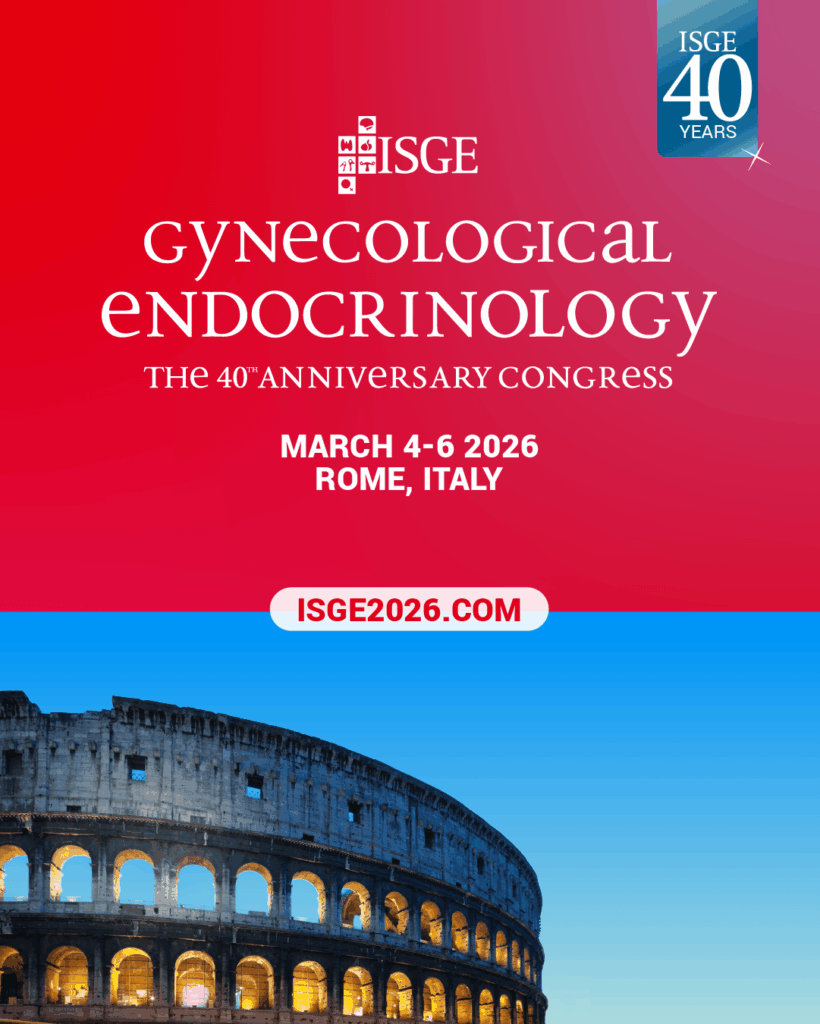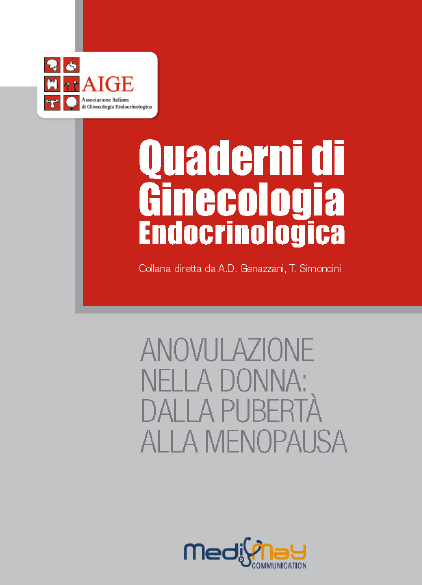-
Lulu Zhang, Yuqian Li, Xiaokang Dong, Wen Zhou, Chongjian Wang, Zhenxing Mao, Xiu Yang, Mengying Fan, Shengna Han, Linlin Li
Effect of the Age at Menarche and Menopause Status Interaction on Type 2 Diabetes: The Henan Rural Cohort Study
J Clin Endocrinol Metab 105: 1–9, 2020
Download
Abstract
Purpose: The aims of this study were to evaluate the effect of age at menarche (AM) on type 2 diabetes mellitus (T2DM) and to assess whether the fasting plasma glucose (FPG) and homeostasis model assessment (HOMA) index responses to AM and menopause status interact in Chinese rural adults.
Methods: A cross-sectional, population-based study including 23 138 participants was performed. Logistic regression and multivariable linear regression were performed to investigate the relationship between AM and glucose status. Generalized linear model was used to calculate the interaction term of AM and menopause status on FPG and the HOMA index. Interaction plot was used to interpret the significant interaction effect.
Results: Women in the later menarche age group (≥18 years) had a 17.7% lower risk of T2DM (95% confidence interval [CI]: 0.712-0.951, P = .008), after adjusting for multiple variables. Further adjustment for body mass index (BMI) completely attenuated this association (odds ratio = 0.884, 95% CI: 0.764-1.024, P = .099). A significant interaction effect of AM and menopause status on T2DM (P = .004) was observed. The adverse effects of menopausal status on FPG and HOMA-2 of insulin resistance decreased with increasing menarche age, and the age ranges were limited to <18 and 9 to 19 years, respectively.
Conclusions: Later menarche was associated with a lower risk of T2DM, and the association appears to be mediated by BMI. More importantly, the adverse effect of menopause status on T2DM was decreased along with increasing menarche age.
-
Pedro Weslley Souza Rosário, Maria Regina Calsolari
Subclinical Hypothyroidism with TSH > 7 mIU/l and≤ 10 mIU/l and Coronary Artery DiseaseHorm Metab Res 2020; 52: 85–88
Download
Abstract
The association of subclinical hypothyroidism (SCH) with increased cardiovascular risk is controversial when thyroid-stimulating hormone (TSH) concentration is < 10 mIU/l, as well as its association with a higher coronary artery calcium score (CACS) in individuals with low cardiovascular risk. This study evaluated coronary artery disease (CAD) by CACS in asymptomatic, low-cardiovascular risk women with SCH and TSH>7mIU/l and ≤ 10 mIU/l untreated for 5 years after diagnosis. The CACS was obtained for two groups of women with low cardiovascular risk. Group A consisted of 32 women with mild SCH (TSH> 7 mIU/l and ≤ 10 mIU/l) who remained untreated for 5 years, and group B consisted of 32 euthyroid women matched for age and body mass index to group A. The CACS ranged from 0 to 350 (median 0, 25–75 % interval: 0–10) in group A and from 0 to 280 (median 0, 25–75 % interval: 0–0) in group B. Scores > 0 and ≥ 10 were significantly more frequent in group A (40.6 vs. 12.5% and 25 vs. 3.1%, respectively). A CACS ≥ 100 was also more frequent in group A (18.75 vs. 3.1 %), but the difference was not significant (p=0.1). The results of the study suggest that long-term SCH with TSH> 7mIU/l and ≤ 10mIU/l is associated with a higher risk of CAD in individuals ≤65 years, even in those with low cardiovascular risk.
-
Ruth Mary Hodgson, Hui Linn Lee, Rui Wang, Ben Williem Mol, Neil Johnson
Interventions for endometriosis-related infertility: a systematic review and network meta-analysisFertil Steril 2020;113:374–82
Download
Abstract
Objective: To compare the effectiveness of different treatments for women with endometriosis-related infertility. Design: A systematic review and network meta-analysis of randomized controlled trials (RCTs). Setting: Not applicable. Patient(s): Women with endometriosis confirmed by laparoscopy with associated infertility.
Intervention(s): An extensive electronic search of the following databases: Cochrane Central Register of Controlled Trials (CENTRAL), MEDLINE, ClinicalTrials.gov, and Embase.
Main Outcome Measure(s): Clinical pregnancy, live birth rate, miscarriage, and adverse events. Result(s): A total of 4,252 trials/abstracts were identified through the literature search, of which we included 36 trials in the systematic review and 26 trials reporting on 2,245 women with endometriosis-related infertility in the network meta-analysis. Network metaanalysis showed that compared with placebo, surgical laparoscopy alone (odds ratio ¼ 1.63; 95% confidence interval, 1.13–2.35) or GnRH agonist alone (odds ratio ¼ 1.68; 95% confidence interval, 1.07–2.46) results in higher odds of pregnancy. The evidence on the other interventions versus placebo or on the secondary outcomes including live birth, miscarriage, and adverse events is insufficient.
Conclusion(s): The most important conclusion is that more RCTs are needed to clarify the relative effectiveness of treatments for endometriosis-related infertility, ideally comparing interventions to existing recommended interventions such as surgical laparoscopy. In addition, further RCTs comparing IVF and IUI to other treatments are essential.
-
Yu Wakimoto, Susanne Elisabeth Pors, Jesus Cadenas, Lotte Colmorn, Erik Ernst, Margit Dueholm, Jens Fedder, Linn S. Mamsen, Stine Gry Kristensen, Claus Yding Andersen
The precise ovarian volume is significantly associated with serum concentrations of antimullerian hormone, the luteinizing hormone/ follicle-stimulating hormone ratio, and total testosteroneFertil Steril 2020;113:453-9.
Abstract
Objective: To evaluate potential associations between concentrations of antimullerian hormone (AMH) and T as well as the LH/FSH € ratio and the unbiased precise ovarian volume obtained after unilateral ovariectomy.
Design: Cohort study.
Setting: University hospital.
Patient(s): A total of 765 patients having one ovary surgically removed for fertility preservation.Inclusion criteria were age>15 years and ovarian volume
Main Outcome Measure(s): A precise weight of the ovary was equated with ovarian volume. Associations between ovarian volume and AMH, the LH/FSH ratio, T concentrations, and body mass index (BMI) were evaluated. Patient characteristics in relation to ovarian volume cutoff values between 8 and 12 mL were also examined.
Result(s): Ovarian volume was significantly positively associated with concentrations ofAMH, the LH/FSH ratio, and T. Ovarian volume, concentrations of AMH and LH, and the LH/FSH ratio were significantly augmented in women having ovarian volumes above a threshold of 8, 9, and 10 mL compared with those below. Average age, FSH, and T concentrations did not differ between below and above the 10 mL threshold. There was a significant association between BMI and ovarian volume and BMI and T, while other hormone parameters were nonsignificant.
Conclusion(s): The precise ovarian volume reflected ovarian activity measured as circulating concentrations of AMH and T as well as the LH/FSH ratio. These significant associations showed continuous progression, and a 10 mL threshold offered no clear difference compared with other volume threshold values.
-
Blazej Meczekalski, Gonzalo R. Pérez-Roncero, María T. López-Baena, Peter Chedraui & Faustino R. Pérez-López
The polycystic ovary syndrome and gynecological cancer riskGynecol Endocrinol 2020, published online
Apri
Abstract
This review updates the knowledge regarding the association between the polycystic ovary syndrome (PCOS) and the risk of gynecological cancer. We performed a literature review of clinical and epidemiological studies concerning PCOS and the risk of breast, endometrial and ovarian cancer after selecting information by quality of scientific methodology. It was found that evidence does not support a link between PCOS and breast cancer risk. There is an increased risk of endometrial cancer, while data concerning ovarian cancer are contradictory. Regarding PCOS and its association to cervical, fallopian tube, and vulvar cancer, the quality of evidence is heterogeneous. In conclusion, women with PCOS should be screened for endometrial cancer and more research is warranted to determine in this population the true risk of developing other gynecological cancers such as breast and ovarian.
-
Tessa Copp, Erin Cvejic, Kirsten McCaffery, Jolyn Hersch, Jenny Doust, Ben W. Mol, Anuja Dokras, Gita Mishra, Jesse Jansen
Impact of a diagnosis of polycystic ovary syndrome on diet, physical activity and contraceptive use in young women: findings from the Australian Longitudinal Study of Women’s HealthHuman Reproduction, Vol.35, No.2, pp. 394–403, 2020
Apri
Abstract
STUDY QUESTION: Do diet, physical activity and contraceptive use change after receiving a diagnosis of polycystic ovary syndrome (PCOS)?
SUMMARY ANSWER: Using longitudinal data 12 months apart, young women newly diagnosed with PCOS were more likely to stop using contraception but did not change their physical activity or vegetable intake. WHAT IS KNOWN ALREADY: Diagnostic criteria for PCOS have widened to capture more women, despite limited evidence of the benefits and harms. Possible benefits of a PCOS diagnosis are that it may help women with family planning and motivate them to implement healthy lifestyle changes to reduce the reproductive, metabolic and cardiovascular risks associated with PCOS. However, there are no empirical studies investigating how women respond to a diagnosis of PCOS with respect to their health behaviour, and longitudinal population-based studies are lacking.
STUDY DESIGN, SIZE, DURATION: This is a longitudinal analysis of two waves of data collected 12 months apart from the cohort born 1989–1995 in the Australian Longitudinal Survey on Women’s Health, a population-based cohort study. Women in this cohort were first surveyed in 2012-2013, aged 18-23 years. PARTICIPANTS/MATERIALS, SETTING, METHODS: Women who responded to the 2014 survey (aged 19–24, n = 11 344) and 2015 survey (aged 20–25, n = 8961) were included. Using logistic regression, multinomial logistic regression and linear regression, change in vegetable intake, physical activity and contraceptive use were compared for women newly diagnosed with PCOS to women not reporting a diagnosis of PCOS. Changes in psychological distress and BMI were also examined.
MAIN RESULTS AND THE ROLE OF CHANCE: Young women reporting a new diagnosis of PCOS were no more likely to increase their vegetable intake or physical activity than women not reporting a PCOS diagnosis. Women newly diagnosed with PCOS were 3.4 times more likely to stop using contraception during the 12-month study period than women without PCOS (14% versus 4%, 95% CI = 2.3 to 5.1, P < 0.001). This difference remained significant after controlling for demographics, chronic conditions associated with PCOS, endometriosis, BMI and psychological distress (P < 0.001).
LIMITATIONS, REASONS FOR CAUTION: All data was self-reported including PCOS diagnosis, assessment of diet quality was limited to vegetable intake only. The exact timing of diagnosis within the 12-month period and whether the women intended to conceive are unknown. The number of women reporting a new diagnosis of PCOS was also relatively small.
WIDER IMPLICATIONS OF THE FINDINGS: These findings suggest that a diagnosis of PCOS may not produce short-term benefits by way of improving health behaviour. The observed reduction in contraception use suggests some women may be at increased risk of unplanned pregnancies, highlighting the importance of counselling about contraceptive needs. Both potential benefits and harms must be considered when determining the appropriateness of a PCOS diagnosis.
-
Andrea Giannini, Amaury Trujillo , Claudia Buzzi , Mirko Duradoni , Cesare Zavattari , Alessandro Tommasi , Elena Tamburini , Pasquale Cingolani , Sandro Scattareggia , Tommaso Simoncini
Rationale and development of the Vita Nova project: and app and service to reduce cardiovascular and metabolic risks in pre-menopausal and menopausal womenEuropean Gynecology and Obstetrics. 2020; 2(1):62-67
Download
Abstract
Background and purpose: Despite the recent increase in research and development of mobile self-care tools, there is still a marked lack of solutions focusing on prevention of the negative health effects of the menopause. Moreover, most of the solutions that do exist are not based on well-founded user models, such as personas, and fail to exploit the potential of persuasive mobile technology, and thus result in a user experience that is neither engaging nor adaptive.
Methods: We describe how we designed personas during the development of a mobile application for menopause selfcare. We applied the principles of the Persuasive Systems Design model and the Just-in-Time Adaptive Interventions framework, together with participatory techniques and demographic data analysis.
Results: The Vita Nova App prototype has been successfully completed. The usability of this mobile app and service, designed to accompany and coach women regarding the menopause, automatically adapting to their wants and needs in order to induce positive health-related behavioural changes, is currently being verified through a pilot study in a “real-life” scenario of a small group of healthy peri-menopausal and early- and late- postmenopausal women. This preliminary investigation is now in its final stages.
Conclusions: This approach allowed us to come up with reliable representations of our target users and their goals, which in turn enables us to better define and communicate our project’s scope and features. Moreover, this approach is not limited to the menopause domain. In the future, it could also be used, to reliably represent users, when designing mobile self-care solutions in other health-related domains or scenarios of female life. Further investigations in larger study populations of healthy peri- and post-menopausal women will be mandatory in order to assess the real impact of this app
-
Stavroula A. Paschou, Areti Augoulea, Nikos Syggelos, Irene Lambrinoudaki
Premature Ovarian InsufficiencyEuropean Gynecology and Obstetrics. 2020; 2(1):5-9
Download
Abstract
Premature ovarian insufficiency (POI) is a clinical syndrome defined by the presence of ovarian dysfunction before the age of 40 years. The prevalence of POI is around 1%. The following diagnostic criteria are mostly adopted nowadays: (i) oligo/amenorrhea for at least four months, and (ii) FSH levels > 25 IU/l on two occasions more than four weeks apart. POI can be the result of iatrogenic, genetic and autoimmune causes. Karyotyping should be performed in all women with non-iatrogenic POI, while fragile X premutation testing is also indicated. Screening with anti-21OH Abs (or alternatively adrenocortical Abs) and anti-TPO Abs should also be considered. No causal relationship between smoking and POI has been proved, but smoking has been associated with early menopause. In the majority of cases, the cause of POI is not identified and these women are described as having idiopathic POI. Untreated POI is associated with increased risk of type 2 diabetes mellitus and reduced life expectancy, largely due to cardiovascular disease. POI is also associated with reduced bone mineral density and increased risk of fracture. These women should maintain a healthy lifestyle with appropriate diet and exercise. Women with POI should also receive hormone replacement therapy with standard doses of oral (17ß-E2 2-4 mg or CEE 0.625-1.25 mg) or transdermal (17ß-E2 50-100 μg) estrogens and progestogens (natural progesterone 200 mg or dihydrogesterone 10-20 mg or norethisterone 1-5 mg) up to the age of normal menopause (50 years). There is a small chance of spontaneous pregnancy, therefore women with POI should be advised to use contraception, if they wish to avoid pregnancy. There are no interventions that have been reliably shown to increase ovarian activity and natural conception rates, therefore oocyte donation is, so far, the established option in the event of fertility issues.






